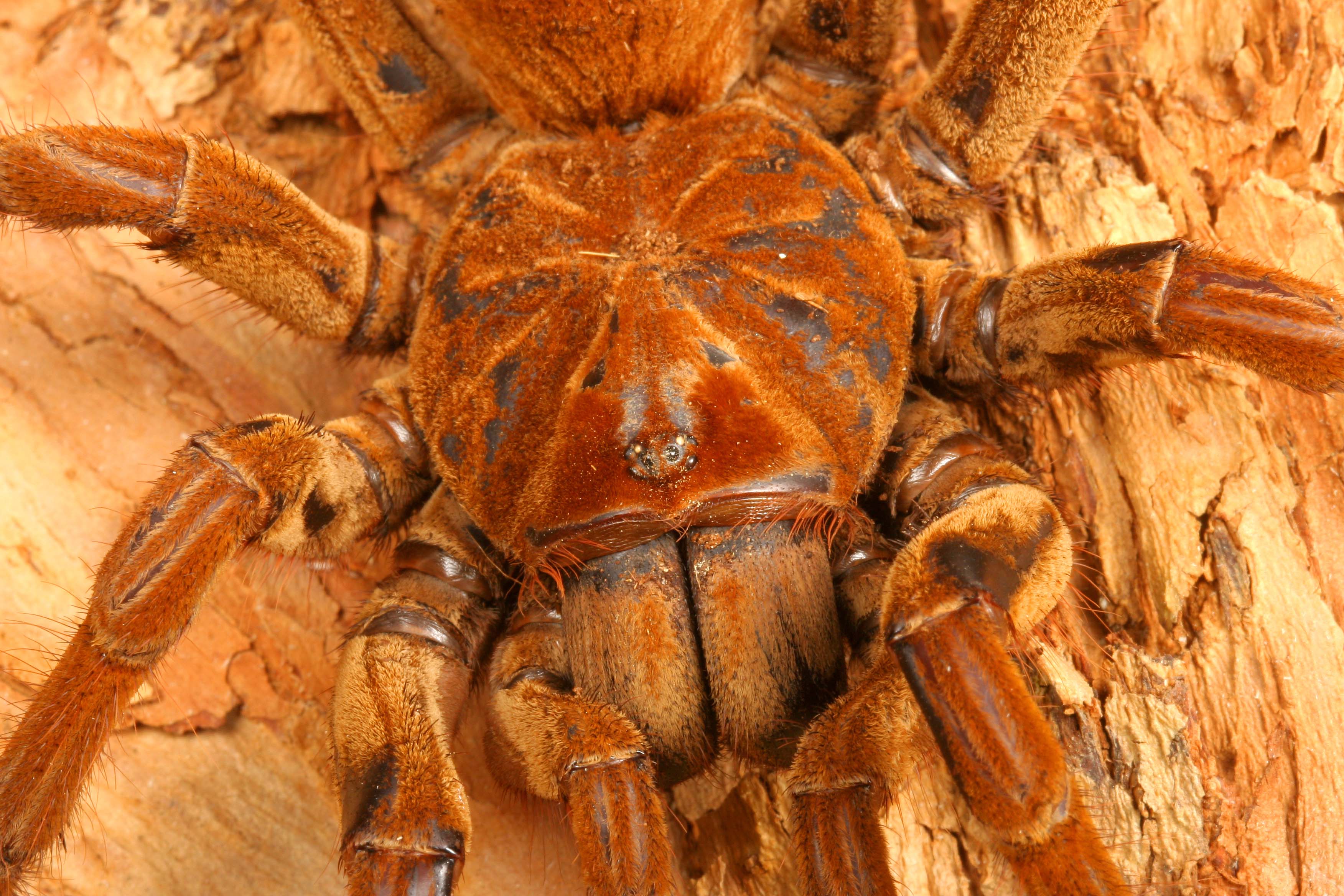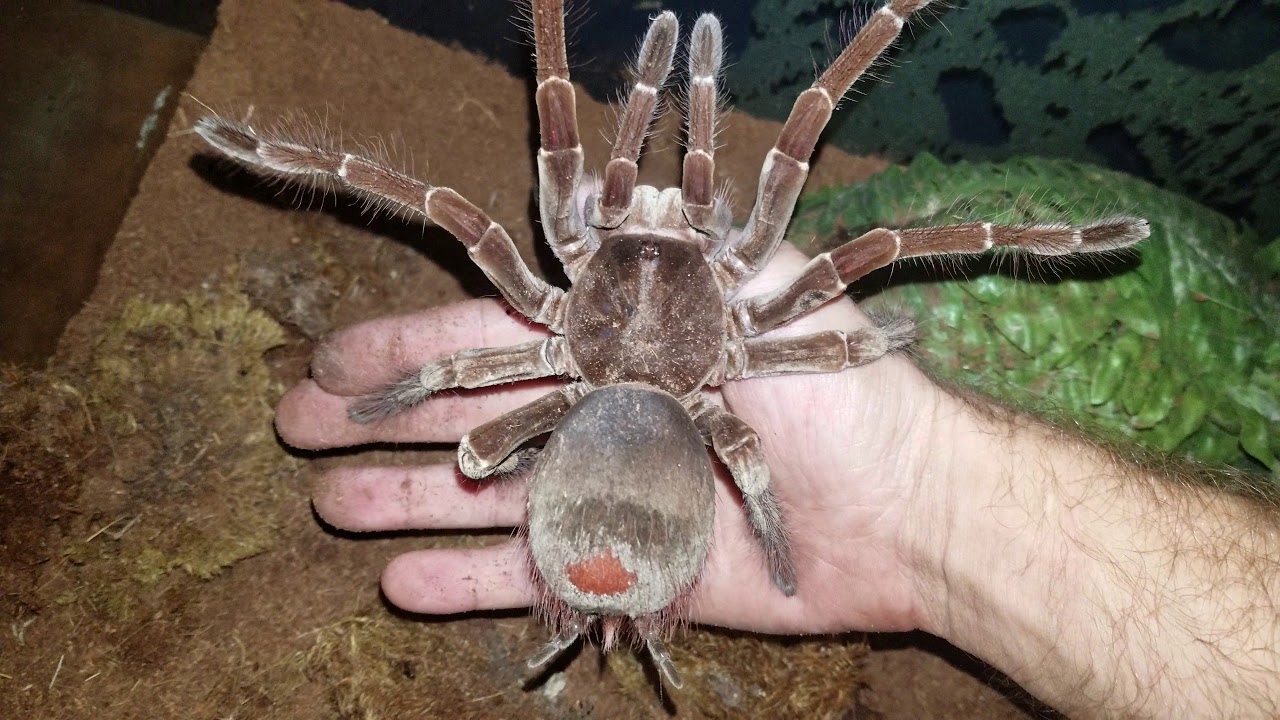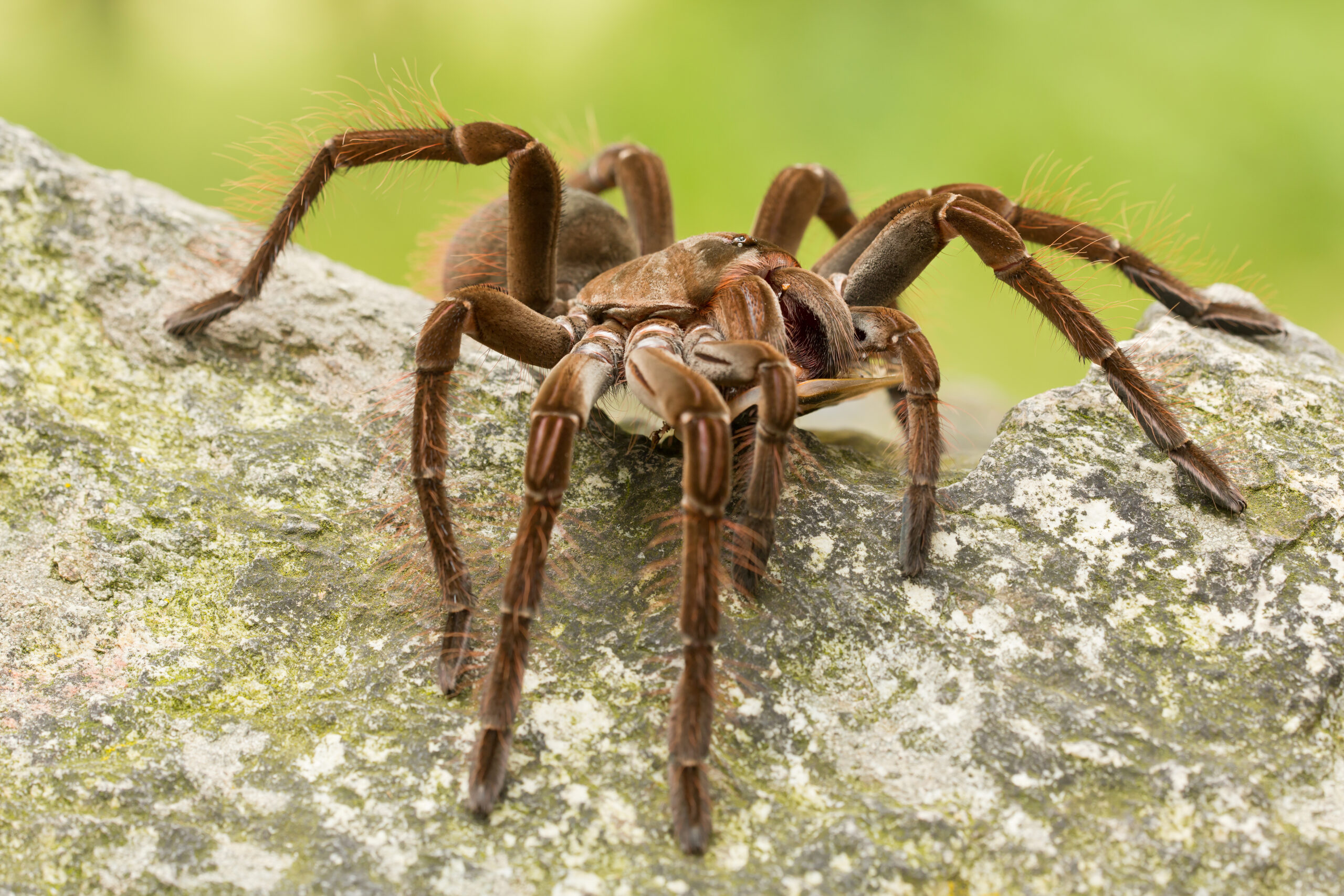The Goliath Birdeater: Unveiling Earth's Largest Spider
A Colossal Presence: What Makes the Goliath Birdeater So Big?
When we talk about the **Goliath Birdeater**, its sheer size is often the first thing that comes to mind. This arachnid truly lives up to its name, dominating the spider world in several key metrics. It is officially recognized as the largest spider in the world by both mass and body length. Imagine a spider weighing in at over 6 ounces (175 grams) – roughly the weight of a small puppy – and boasting a body length of up to 5.1 inches (13 cm). These impressive figures make it a heavyweight champion among its eight-legged kin. While the **Goliath Birdeater** excels in mass and body size, it takes a close second place in terms of leg span. Its impressive legs can stretch up to 11 inches (28 cm) across, a span comparable to a dinner plate. This is only bested in length by the Giant Huntsman Spider (*Heteropoda maxima*), which, despite its longer legs, has a significantly smaller body mass. The Goliath Birdeater's body is typical of a spider, formed of a fused head and thorax, known as a cephalothorax, and a distinct abdomen. Its eight powerful legs are equipped with characteristic spines on the third and fourth pairs, aiding in movement and possibly defense. These physical attributes combine to create a creature that is undeniably awe-inspiring in its scale.Where the Giants Roam: Habitat and Distribution
The natural domain of the **Goliath Birdeater** is the lush, humid rainforests of northeastern South America. These incredible spiders are primarily found in countries such as Venezuela, Brazil, and Guyana, where the dense foliage and high humidity provide the ideal conditions for their survival. They are ground-dwelling creatures, preferring to inhabit burrows that they either excavate themselves or take over from other small animals. These burrows provide a safe, moist, and stable environment, protecting them from predators and the fluctuating temperatures of the rainforest floor. Their preferred microhabitats within these rainforests often include swampy or marshy areas, where the soil is soft enough for digging and there is an abundance of prey. The thick canopy overhead provides shade, maintaining the consistent humidity levels that are crucial for a tarantula of this size. This specific distribution highlights the specialized environmental needs of the **Goliath Birdeater**, underscoring its reliance on pristine rainforest ecosystems for its continued existence. Understanding their habitat is key to appreciating their role in the delicate balance of these biodiverse regions.Dispelling the Myth: What Does a Goliath Birdeater Really Eat?
The name "Birdeater" immediately conjures images of a fearsome arachnid snatching birds from the sky. However, this common misconception is largely a misnomer, and one of the most important facts to understand about the **Goliath Birdeater**. While they are certainly capable of preying on small vertebrates, birds make up a very rare, almost negligible, part of their diet.A Name That Deceives
The origin of the "Birdeater" name is believed to stem from an 18th-century engraving by Maria Sibylla Merian, which depicted a large tarantula eating a hummingbird. While such an event can occur opportunistically, it is far from the norm. The primary diet of the **Goliath Birdeater** consists mainly of invertebrates. They are highly effective ambush predators, lying in wait for unsuspecting insects like crickets, beetles, and cockroaches to wander by. Beyond insects, their diet can extend to other small creatures that cross their path. This includes various amphibians such as frogs, reptiles like lizards, and even small mammals such as mice. Their powerful fangs and venom allow them to subdue prey much larger than typical spiders. Despite their formidable appearance and "birdeater" moniker, these spiders play a crucial role in their ecosystem by primarily controlling insect populations. This makes them a vital, rather than purely terrifying, component of the rainforest food web.Life's Journey: The Goliath Birdeater's Life Cycle
The life cycle of the **Goliath Birdeater** is a fascinating testament to arachnid biology, characterized by significant growth and a relatively long lifespan for an invertebrate. Like all spiders, they grow by a process called molting. This involves casting off their old, rigid exoskeleton to make way for a larger, softer one underneath. During this vulnerable period, they are highly susceptible to predators, so they typically retreat into their burrows until their new exoskeleton hardens. Spiderlings, the baby spiders, hatch from eggs that the female carefully guards within a sac she spins of silk. While most spiderlings are tiny, the young of the **Goliath Birdeater** are surprisingly substantial, often measuring nearly 0.75 inches long at birth. These spiderlings remain with their mother for a period of two to three weeks, during which they feed voraciously and grow rapidly. In their first year alone, spiderlings can molt an impressive five to six times, indicating their rapid development. They typically reach sexual maturity in two to three years, a relatively quick turnaround for such a large creature. While specific lifespan data can vary, female Goliath Birdeaters are known to live for many years, often exceeding 15-20 years in captivity, far outliving their male counterparts who typically live only 3-6 years after maturity. This extended lifespan allows them to contribute significantly to their ecosystem over time.Behavior and Defense Mechanisms
The **Goliath Birdeater** is primarily a nocturnal creature, emerging from its burrow under the cover of darkness to hunt. As an ambush predator, it relies on its keen sense of vibration to detect prey. Once an unsuspecting animal comes within striking distance, the spider lunges, injecting venom through its powerful fangs. Its hunting strategy is efficient and effective, allowing it to capture a wide range of prey as discussed earlier. Despite its intimidating size, the **Goliath Birdeater** is generally not aggressive towards humans. However, when threatened, it employs several impressive defense mechanisms. One of its primary defenses is the flicking of urticating hairs from its abdomen. These microscopic, barbed hairs can cause severe irritation, itching, and rashes on skin, and can be particularly dangerous if they get into the eyes or respiratory system. This serves as a highly effective deterrent against most predators. If the initial hair flicking isn't enough, the **Goliath Birdeater** may rear up on its hind legs, displaying its fangs in a classic threat posture. It can also produce a loud hissing sound, known as stridulation, by rubbing bristles on its legs together. This audible warning is designed to intimidate potential threats. While it possesses venom and can deliver a bite, its venom is generally considered mild to humans, comparable to a wasp sting, causing localized pain and swelling but rarely severe systemic effects. This reinforces the idea that it's not as scary as its reputation suggests, primarily using its defenses to avoid confrontation rather than seek it.Beyond the Fear: The Goliath Birdeater's Ecological Importance
While its size and name might inspire fear, the **Goliath Birdeater** plays a crucial and vital role in its rainforest ecosystem. Like all predators, it helps to maintain the delicate balance of its habitat by controlling populations of other species. Its primary diet of insects and small vertebrates positions it as an important natural pest controller. Without such predators, populations of prey animals could explode, leading to imbalances that negatively impact the health of the entire ecosystem. The presence of the **Goliath Birdeater** signifies a healthy and thriving rainforest environment. As a top invertebrate predator, it contributes significantly to the food web, serving as both a consumer and, in turn, a potential food source for larger animals, although its formidable defenses make it a challenging meal. Its burrowing activities can also contribute to soil aeration and nutrient cycling, further benefiting the plant life in its habitat. Understanding its ecological importance helps shift perception from a creature to be feared to one that is a fascinating and indispensable part of the animal kingdom.Human Encounters and Conservation
Encounters between humans and the **Goliath Birdeater** are relatively rare, given its nocturnal habits and remote rainforest habitat. However, when they do occur, it's important to approach them with respect and understanding rather than fear.Is the Goliath Birdeater Dangerous to Humans?
Despite its imposing size and venomous bite, the **Goliath Birdeater** is generally not considered dangerous to humans. As mentioned, its venom is relatively mild, comparable to a bee or wasp sting, causing localized pain, swelling, and redness. Serious allergic reactions are possible, as with any insect sting, but are uncommon. The primary defense mechanism it employs against humans is the flicking of urticating hairs, which can cause significant irritation. A bite is usually a last resort if the spider feels cornered or severely threatened. For this reason, it's advised to observe these magnificent creatures from a distance and never attempt to handle them. The notion that it's "not as scary as it sounds" holds true when considering its interaction with humans.Conservation Status and Threats
While the **Goliath Birdeater** is not currently listed as endangered by the IUCN (International Union for Conservation of Nature), it faces threats common to many rainforest species. Habitat destruction, primarily due to deforestation for agriculture, logging, and mining, is a significant concern. As its specific rainforest habitat shrinks, so too does the available territory for these spiders. Additionally, illegal pet trade can put pressure on wild populations, though its remote habitat offers some protection. Conservation efforts focused on protecting the South American rainforests are crucial for the long-term survival of the **Goliath Birdeater** and countless other species that call these biodiverse regions home. There's also some cultural interest in the species, with reports of its culinary use in certain indigenous communities in South America, where it's roasted after removing the urticating hairs, highlighting a unique human interaction with this giant arachnid.Understanding the Tarantula Family Tree: Goliath Birdeater's Place
To truly appreciate the **Goliath Birdeater**, it's helpful to understand its place within the broader classification of spiders. The Goliath Birdeater (*Theraphosa blondi*) belongs to the tarantula family, Theraphosidae. This family encompasses a vast array of large, hairy spiders found across the globe, many of which are popular in the pet trade due to their docile nature and impressive size.The Mygalomorph Suborder
The **Goliath Birdeater** and other spiders commonly thought of as "tarantulas" are part of the Mygalomorph suborder. Mygalomorphs are considered "primitive" spiders due to certain anatomical features, such as their fangs, which point downwards and strike in a parallel motion (unlike araneomorphs, which have pincers that cross). This suborder includes trapdoor spiders, funnel-web spiders, and, of course, tarantulas. Their evolutionary history dates back millions of years, making them ancient lineages in the spider world.The "True" Tarantula Distinction
It's also interesting to note the historical context of the word "tarantula." The original "tarantula" was *Lycosa tarantula*, also known as the wolf spider tarantula, a much smaller, non-tarantula spider native to southern Italy. Its name comes from the city of Taranto, and it was associated with a dancing frenzy called "tarantism," believed to cure its bite. Over time, the term "tarantula" became broadly applied to large, hairy spiders, especially those in the Theraphosidae family, leading to the common usage we know today. Thus, while the **Goliath Birdeater** is undoubtedly a tarantula in common parlance, it's a distant relative of the spider that first bore the name.Conclusion
The **Goliath Birdeater** stands as a testament to the incredible diversity and awe-inspiring scale of the natural world. From its unparalleled size and distinctive physical characteristics to its complex life cycle and crucial ecological contributions, this giant tarantula is far more than just a creature of fear. It is a vital component of the South American rainforests, playing an essential role in controlling insect populations and maintaining the health of its ecosystem. By understanding its true nature, dispelling myths about its diet and danger, and appreciating its unique place in the arachnid family tree, we can move beyond initial apprehension to a place of profound respect and fascination. The **Goliath Birdeater** reminds us that even the most intimidating creatures have a story to tell and a vital role to play. So, the next time you hear its name, remember not the fear it might initially spark, but the wonder of Earth's largest spider. What are your thoughts on the Goliath Birdeater? Have you ever encountered one, or perhaps seen one in a zoo? Share your experiences and insights in the comments below! If you found this article insightful, consider sharing it with fellow nature enthusiasts or exploring other fascinating creatures on our site.- Emily Compagno Husband
- Shawn Killinger Husband Joe Carretta
- Mayme Hatcher Johnson
- Emma Cannon Mgk
- Exploring Kaitlan Collins Husbands Nationality A Comprehensive Insight

Goliath Birdeater

The Goliath Birdeater (Theraphosa blondi) is the world's largest spider

Goliath Birdeater – The Lawrence Hall of Science